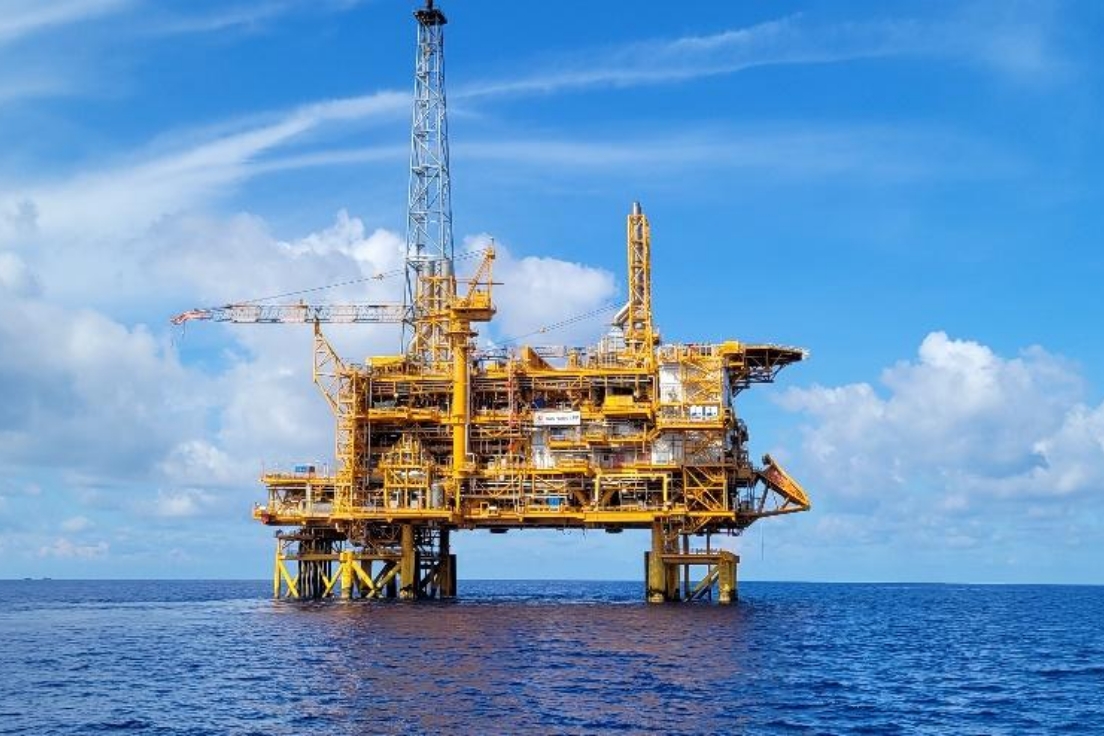What is oil and natural gas development?
How oil and natural gas are produced
Oil and natural gas are said to be produced by the decomposition of the remains of ancient organisms deposited underground by microorganisms and high temperatures, changing over millions to tens of millions of years.
The oil and natural gas that is produced is unevenly distributed depending on the environment and time period in which it was deposited, so oil and gas producing countries are also concentrated in some parts of the world.
1.Ancient living things changed into organic matter
1.Ancient living things changed into organic matter
It is said that the carcasses of land and sea animals and plants that have sunk to the seabed along with sediment and piled up in layers are decomposed by underground microorganisms and transformed into an organic compound called kerogen.
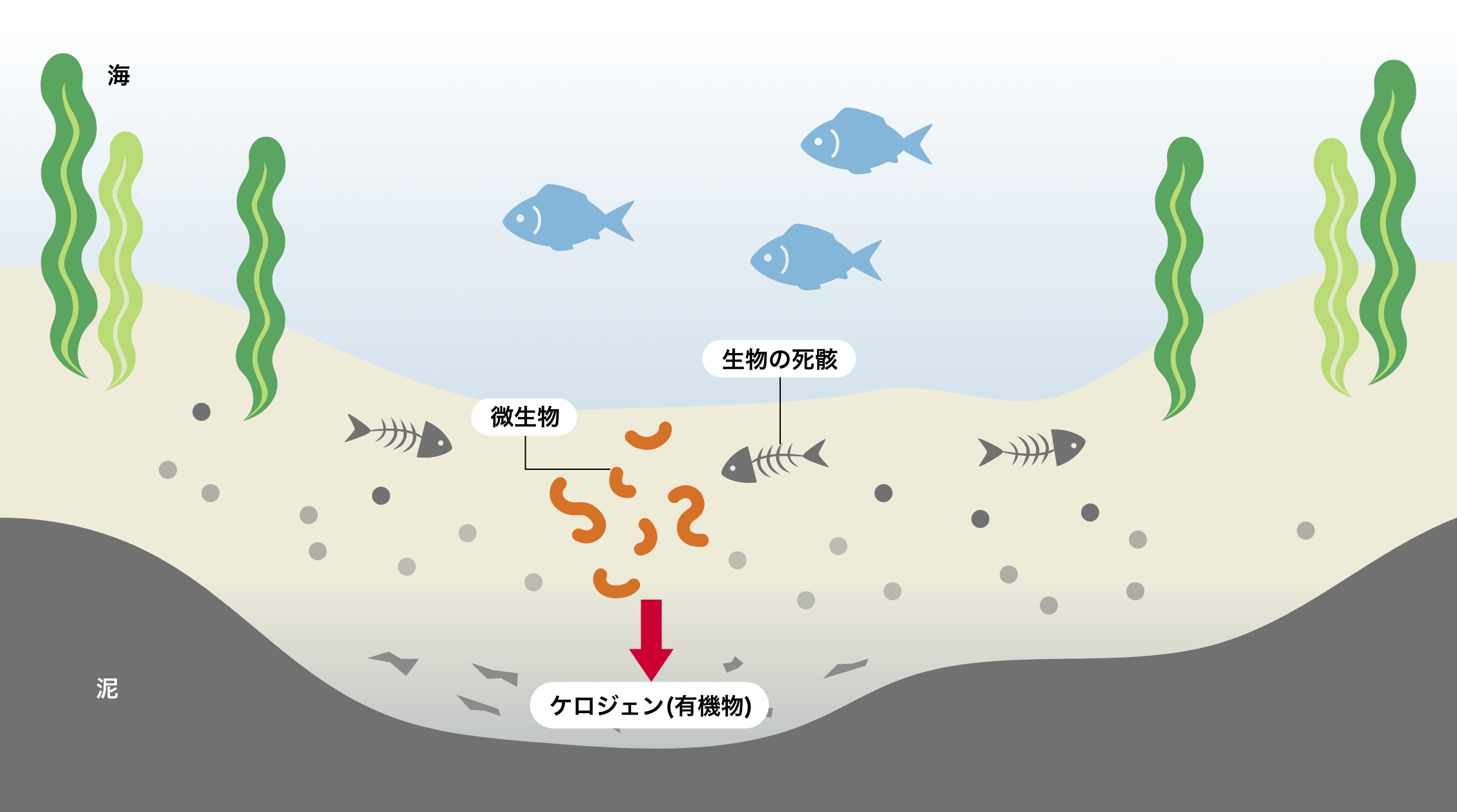
2. Changes to oil and natural gas
2. Changes to oil and natural gas
When kerogen is buried deep underground, it matures due to the high temperatures and pressures deep underground. The liquid that changes into a liquid is called oil, and the gas that changes into a gas is called natural gas.
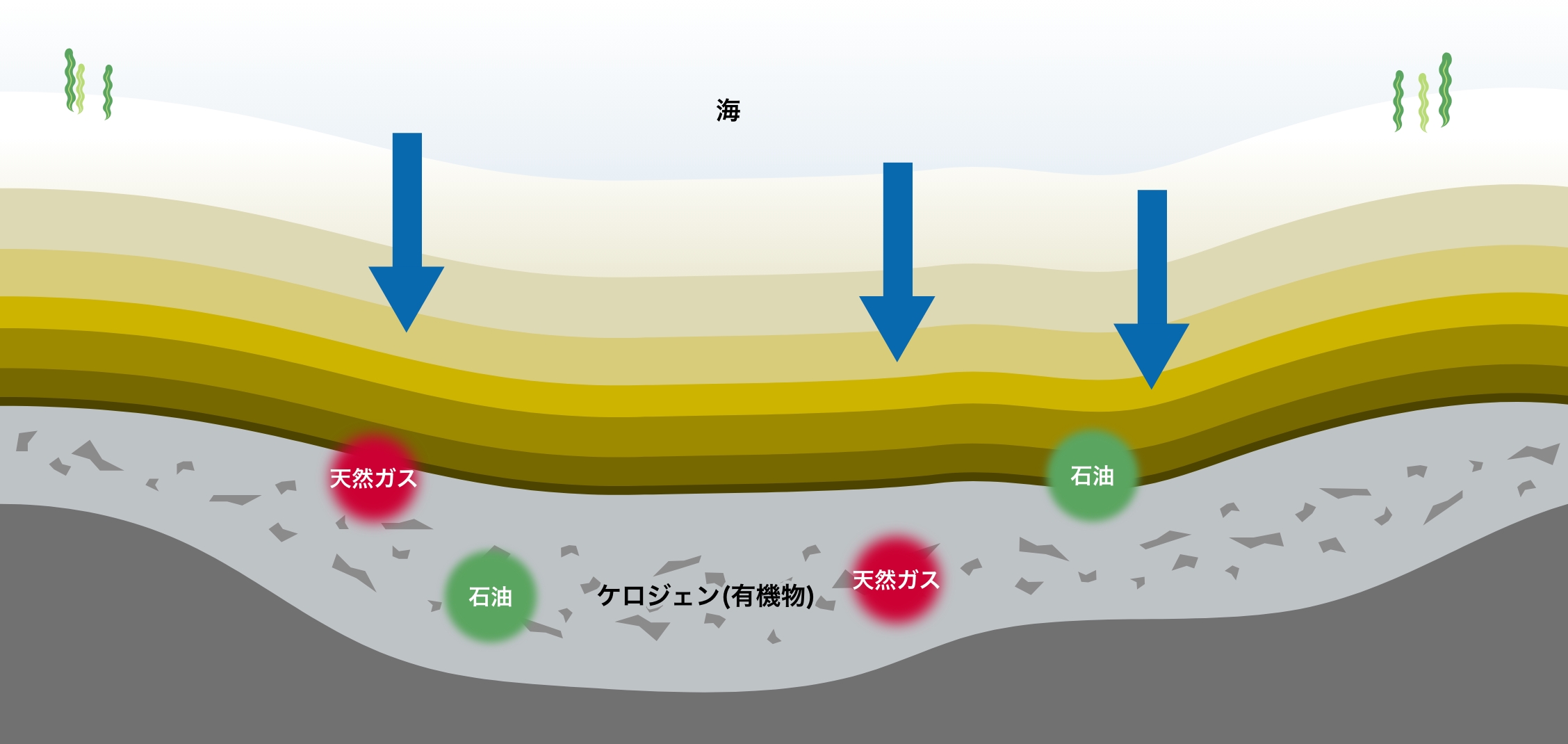
3. Formation of oil and gas fields
3. Formation of oil and gas fields
The oil and natural gas produced in this way move upwards over time through gaps in the strata due to the buoyancy caused by the density difference between the oil and the strata water that exists deep underground. Oil and natural gas that migrate to the upper strata mainly collect in rock strata with many gaps called "reservoir rocks." Oil and gas fields are formed in locations that have a combination of geological structures that serve as containers for storing oil and gas, and geological strata that have no gaps to prevent the accumulated oil and gas from escaping.
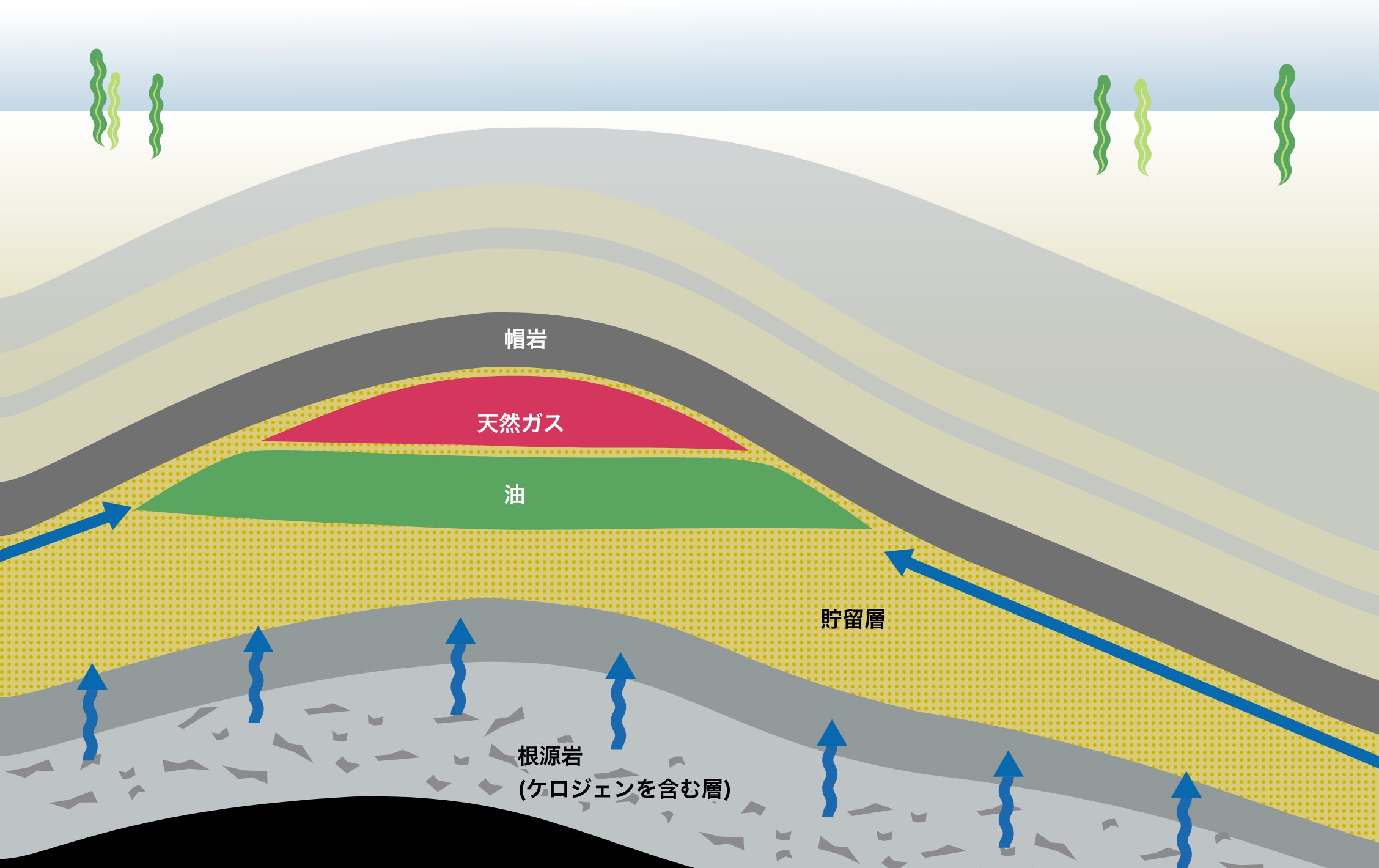
About oil and natural gas development
Oil and natural gas development business is a series of projects that progress through four major stages: "acquisition of mining area,'' "exploration,'' "development,'' and "production.'' Experts are involved at each stage, and evaluations are conducted using a variety of specialized techniques such as petroleum geology, geophysical exploration, and Resources engineering.
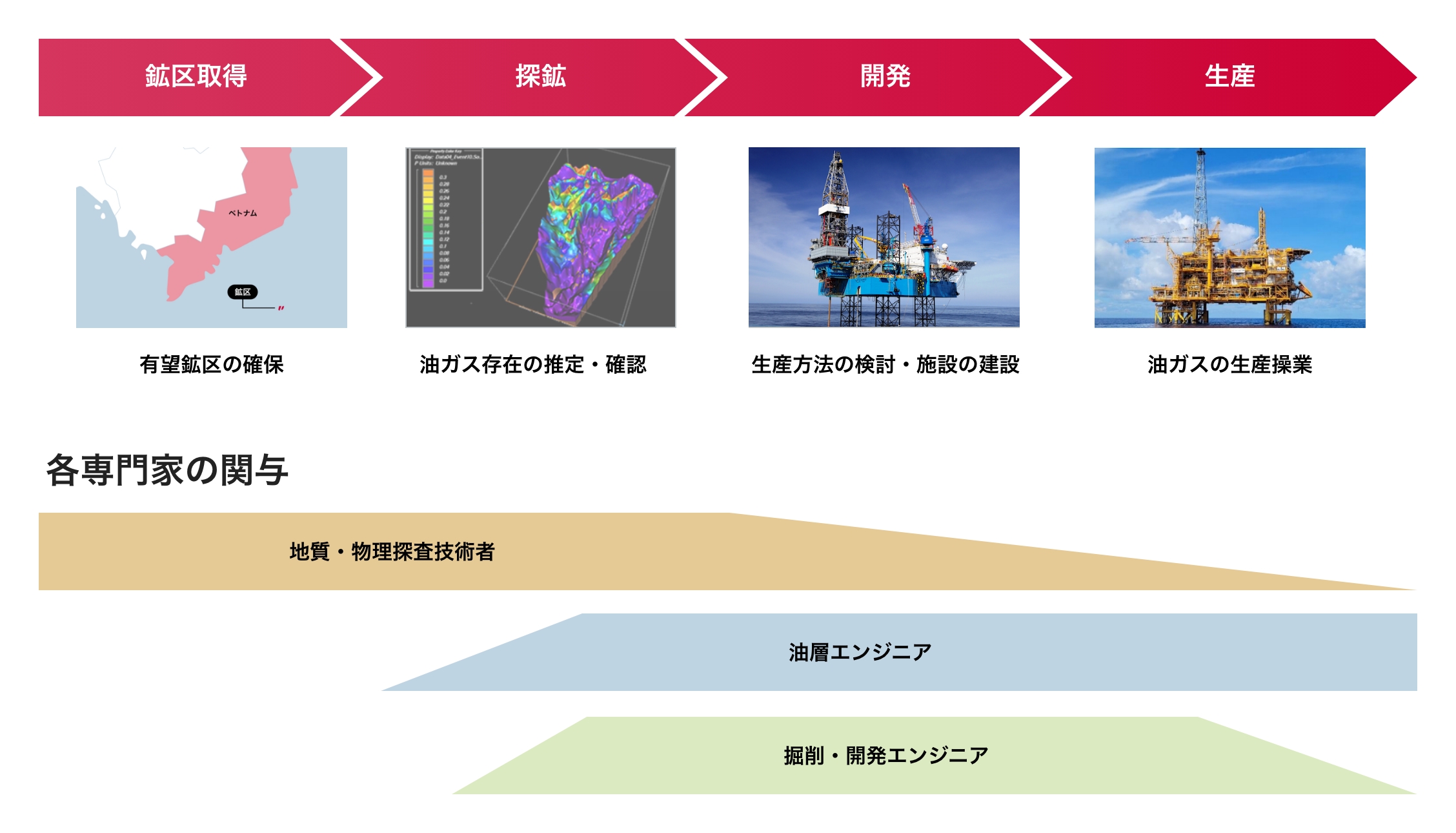
1. Acquisition of mining area
The area where a country that has territorial rights over an area where oil or gas fields may exist has given permission to oil and natural gas development companies to explore and develop is called a "mining area." Oil and natural gas development companies obtain and collect a variety of information and evaluate how much oil or gas may exist within their mining areas. If we determine that the area is promising, we will acquire the mining area by participating in public bidding conducted by the country that owns the area or by purchasing the interest from the business that owns the area.
2.Exploration
Exploration is the activity of searching for oil and natural gas that exists underground, and consists of the following processes.
Geological survey
We analyze the formation of the region's geology from surrounding geological information and data from wells that have already been drilled, and identify the areas in which oil and gas are generated (source rock), move (dynamics), and have sufficient gaps (reservoir rock). ) is likely to be trapped (trap seal). Only when all these conditions (oil system) are met will it be possible to accumulate oil and gas underground.
geophysical exploration
By mathematically processing subsurface response signals to seismic waves and electromagnetic waves transmitted underground from dedicated research vessels and research vehicles, it is possible to understand the structure of underground strata and to understand the physical properties of rocks distributed underground. Investigate the nature. In recent years, there has been technology to directly detect the presence of oil and gas by analyzing physical property values using special methods, and Idemitsu was one of the first to engage in research in this field and has achieved results.
Test well drilling
Drilling equipment is installed on the surface or offshore in areas (prospects) where oil and gas accumulation is expected, which has been identified through geological surveys and geophysical surveys, and wells are dug. Wells are usually 3,000 to 5,000 meters deep, and near the surface, the wells are dug in stages starting at a diameter of just under 1 meter, and while protecting the well with iron pipes, the diameter of the drill is reduced to about 20 centimeters, and samples of rocks and geological fluids are collected. In addition, we use well logging tools to examine the characteristics of the strata to check the extent of gaps in the strata and the presence or absence of oil and gas.
production test
If an accumulation of oil and gas is confirmed as a result of test well drilling, test production is performed using a drilling rig to determine the actual flow rate that can be produced at the surface. Based on the data obtained from this production test, we estimate the number of years of production and changes in production volume during the period, analyze the chemical composition and fluid properties of the product, and reflect this in the design of production and processing equipment. To do.
Exploration and development projects that support a stable supply of oil and natural gas require huge upfront investment costs and lead time, but Idemitsu has developed technology that uses computer simulation to reproduce the formation and movement of oil and gas from source rocks. By focusing on (basin modeling) and special analysis of seismic data (direct detection technology), we have achieved a high detection probability of 60-70% in the current active area.
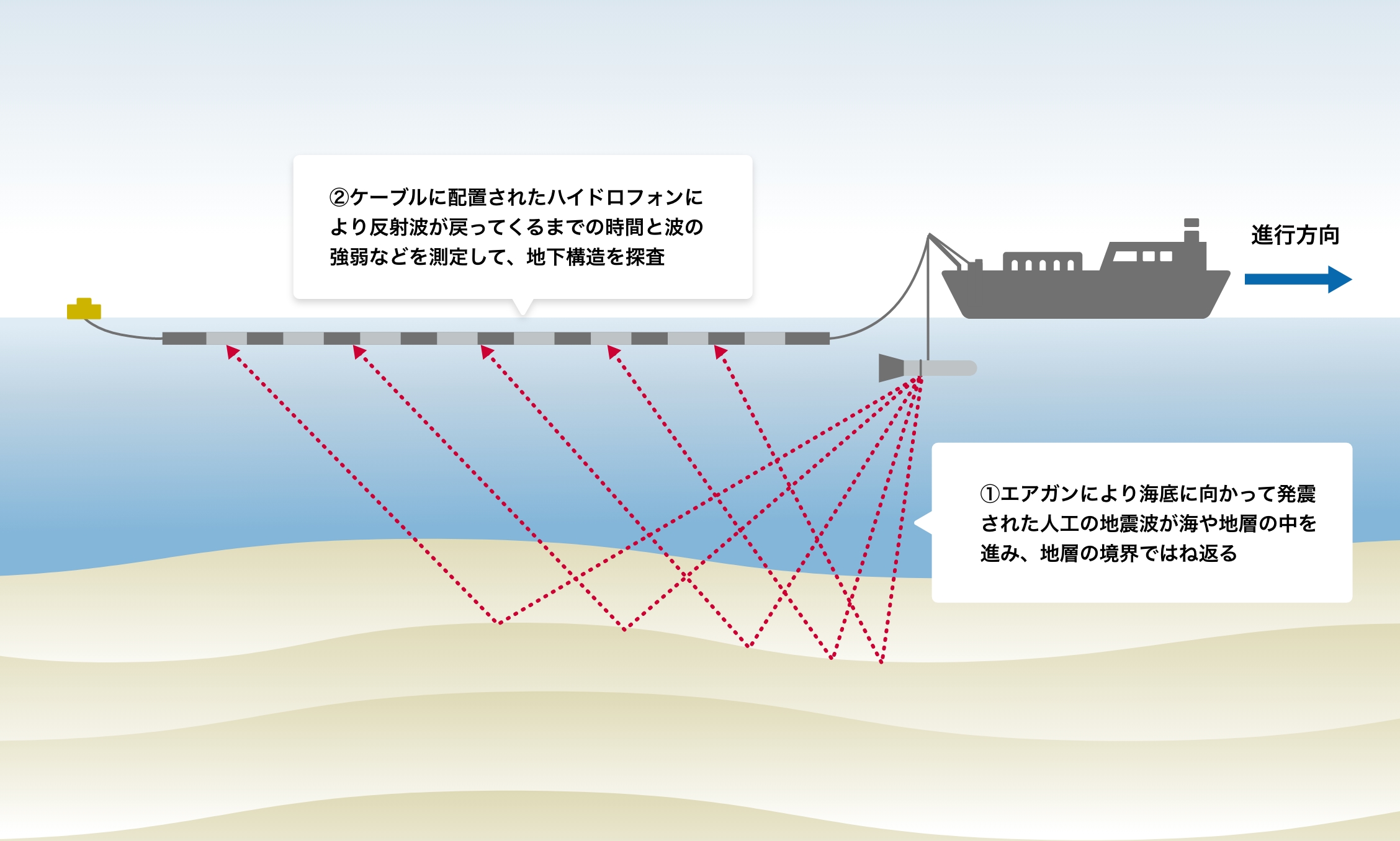
Offshore seismic survey measurements
3.Development
Using data obtained from exploration, we estimate recoverable reserves and production plans based on computer simulations and various considerations.
Based on the estimated production volume and production plan, we design and calculate the cost of optimal production, storage, and shipping facilities, as well as the installation of pipelines to onshore storage tanks and processing facilities.
As a result of this design and cost calculation, if it is determined that commercial production is possible, we will construct tankers and facilities, drill production wells, and lay pipelines.
In the case of LNG (liquefied natural gas) projects, large-scale liquefaction plants and shipping facilities are also required, so we will also be working on securing long-term customers at the same time.
4.Production
Oil and natural gas produced from underground oil and gas reservoirs undergo primary processing (separation of oil and gas and removal of impurities) and are then sent to onshore final processing facilities, where they are processed into products and shipped via pipelines and tankers.
Once production begins, the reserves of oil and gas fields will gradually decrease. Therefore, we will work to produce as much of Resources as possible as efficiently as possible, by carrying out additional developments such as enhanced oil recovery techniques (e.g. CO2 EOR, a method of injecting carbon dioxide into oil fields to increase oil recovery) as necessary.
In addition, after production ends, we will abandon the mine in order to return the site to its pre-development state, and will conduct environmental monitoring to assess any impacts.
